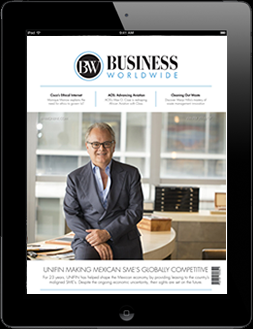Profits and revenue have slumped at Marks & Spencer after poor sales in its clothing and home departments.
The retail giant (MKS.L) said pre-tax profits were down 17.1% in the first half of the financial year, sliding to £176.5m. Revenue dropped 2.1% to £4.86bn.
It comes in spite of renewed efforts to turn around the iconic business, which has seen its shares tumble over the past year and slipped out of the FTSE 100 (FTSE) index of Britain’s biggest companies.
But shares still rose 2.3% in morning trading in London, as growth in food sales, apparent confidence in its turnaround plans and low expectations boosted its value.
Russ Mould, investment director at AJ Bell, said: “The disappointments are piling up for Marks & Spencer like unsold sweaters and cardigans on its shelves.
“Fresh from the surprise departure of its finance chief and its relegation from the FTSE 100 for the first time in September, the company has served up a mixed set of first half results.
“The theme is broadly the same as it has been for years, food has done well but the clothing and home business is struggling – although a combination of low expectations and slightly improved recent trading helped give a bombed out share price a bit of a lift.”
Chief executive Steve Rowe said its food business was “outperforming the market,” with like-for-like sales revenue up 0.9% through higher sales.
But like-for-like sales in clothing and home were down 5.5%, with product “availability issues” and supply chain problems.
Rowe said: “For the first time we are beginning to see the potential from the far-reaching changes we are making.
“In Clothing & Home we are making up for lost time. We are still in the early stages, but we are clear on the issues we need to fix and, after a challenging first half, we are seeing a positive response to this season’s contemporary styling and better value product.”
He said better value, style and availability of some products had sparked “dramatic sales uplifts.”
The company added in its results: “It is a period of profound change in both main businesses and in our organisation and culture. At M&S Food the substantially new leadership team is on track with our original timetable and results are beginning to show.”
The statement offered a frank assessment of the problems at its clothing and home business, saying it had “historically been too slow to market” and had a “confusing mix of own brands.”
“It has had too many slow-moving lines with size ratios and fit profiles misaligned with a family customer profile, resulting in poor availability on the most popular sizes and too much stock and markdown. We aim to reverse this cycle of decline by realigning the shape of buy to the family customer.”
The company has removed dozens of products in clothing and home, instead increasing stock levels for the top 100 lines, introducing “more contemporary fit and styling” and relaunching Per Una.
M&S profits in the half-year to 28 September exclude a £23m hit from one-off “adjusting items,” though this was much lower than the £111.7m in exceptional items recorded last year.
Such costs include store closures, redundancy packages, a supply chain shakeup and provision at M&S Bank for mis-sold insurance provision.
It also said performance in clothing and home products had improved in October after a “difficult first half,” while it said its transformation plans had cut costs by £75m. 17 stores which offer its full range have been closed.
















